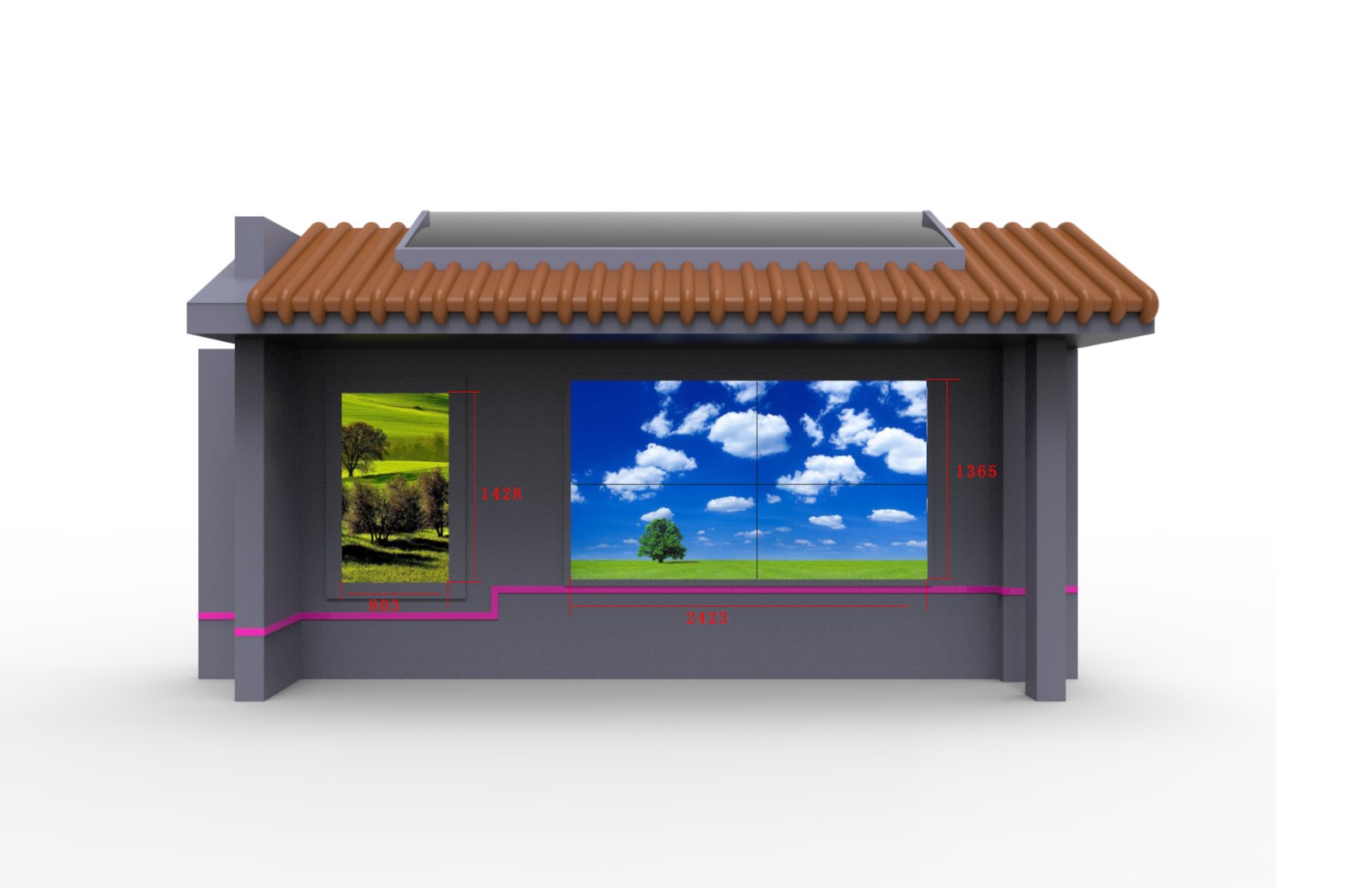Understanding the Components of a Digital Signage System
Understanding the Components of a Digital Signage System.In today's fast-paced, visually-driven world, digital signage has become an indispensable tool for businesses, organizations, and institutions to communicate effectively with their audiences. From vibrant retail displays to informative corporate lobbies, digital signage systems offer a dynamic platform for delivering engaging content. However, behind these sleek, eye-catching screens lies a complex ecosystem of components working in harmony to ensure seamless operation. This article delves into the intricate details of a digital signage system, exploring its various components and their roles in creating a compelling visual experience.

1. Display Devices
At the forefront of any digital signage system are the display devices. These are the physical screens that bring content to life, ranging from small LCD monitors to large-format LED walls. The choice of display depends on several factors, including the intended environment, viewing distance, content requirements, and budget.
LCD Monitors and TVs: Commonly used for indoor applications, LCD displays offer high resolution and color accuracy. They are available in various sizes and are relatively affordable.
LED Screens: Ideal for outdoor or large-scale indoor installations, LED screens provide excellent brightness and can be configured into any shape or size, making them highly versatile.
Interactive Displays: These allow for user interaction, such as touchscreens, enhancing engagement and providing a more immersive experience.
2. Media Players
Media players are the brains behind digital signage systems. They store, process, and play back the content displayed on the screens. There are two primary types of media players:
Dedicated Hardware Media Players: These are specialized devices designed specifically for digital signage. They offer robustness, reliability, and often come with built-in management software.
Software-Based Media Players: Running on operating systems like Windows, Android, or iOS, these can be installed on existing devices like PCs, tablets, or smart TVs. They provide greater flexibility but may require more maintenance.
3. Content Management Software (CMS)
A Content Management System (CMS) is the nerve center of a digital signage network. It allows users to create, schedule, distribute, and manage content across multiple displays from a centralized location. Key features of a robust CMS include:
Content Creation Tools: Drag-and-drop interfaces, templates, and widgets that simplify the design process, even for non-technical users.
Scheduling: Advanced scheduling capabilities to ensure content is displayed at the right time and place.
Remote Management: Real-time monitoring and control over displays, enabling instant updates or troubleshooting.
Analytics: Data collection and reporting tools to measure audience engagement, content performance, and system health.
4. Network Infrastructure
The network infrastructure is the backbone of a digital signage system, facilitating communication between the CMS, media players, and displays. Depending on the scale and complexity of the deployment, this can involve:
Local Area Networks (LAN): For smaller, on-site installations, a LAN ensures fast, secure data transfer.
Wide Area Networks (WAN): For larger, geographically dispersed networks, a WAN, possibly including cloud services, enables remote management and content distribution.
Wireless Connectivity: Wi-Fi or cellular networks can be used where wired connections are impractical, though they may introduce latency or bandwidth limitations.
5. Content Creation and Distribution
Creating compelling content is crucial for the success of any digital signage system. This involves:
Graphic Design Software: Tools like Adobe Creative Suite, Canva, or specialized digital signage design software help create visually appealing content.
Video Production: For dynamic content, video editing software such as Premiere Pro or Final Cut Pro is essential.
Content Distribution: Once created, content must be efficiently distributed. This can be done through the CMS, cloud storage services, or direct file transfer methods.
6. Interactivity and Audience Engagement
To enhance audience engagement, digital signage systems often incorporate interactive elements. These can include:
Touchscreens: Allowing users to interact directly with the content.
Sensors and Cameras: For gesture control, facial recognition, or audience analytics.
Mobile Integration: QR codes, NFC tags, or companion apps that bridge the physical and digital worlds.
Social Media Integration: Displaying real-time social media feeds or enabling user-generated content.
7. Mounting and Installation
Proper mounting and installation are vital for ensuring optimal viewing angles, security, and longevity of the display devices. This involves:
Mounts and Brackets: Wall mounts, ceiling mounts, or floor stands, chosen based on the location and weight of the display.
Cabling and Power Management: Ensuring all necessary cables are hidden, secured, and labeled for easy maintenance.
Environmental Considerations: Factors such as ambient light, temperature, and humidity must be accounted for to prevent damage to the displays.
8. Maintenance and Support
Like any technology, digital signage systems require regular maintenance and support to function at their best. This includes:
Hardware Maintenance: Regular checks and cleaning of displays, media players, and cables.
Software Updates: Keeping the CMS and media player software up-to-date to address bugs and security vulnerabilities.
Technical Support: Having a dedicated support team or service agreement with the vendor for troubleshooting and repairs.
Content Refresh: Regularly updating content to keep it relevant and engaging.
9. Security and Data Privacy
With digital signage systems often connected to the internet and handling sensitive data, security and data privacy are paramount. Measures include:
Network Security: Firewalls, VPNs, and encryption to protect data in transit.
Access Control: Role-based access to the CMS to ensure only authorized users can make changes.
Data Privacy Compliance: Adhering to relevant data protection regulations, such as GDPR or CCPA.
Conclusion
A digital signage system is a sophisticated ensemble of components, each playing a critical role in delivering an impactful visual communication experience. From the display devices that captivate audiences to the CMS that orchestrates content delivery, every element must be carefully selected and integrated to achieve optimal performance. As technology continues to evolve, digital signage systems will become even more intelligent, interactive, and integral to our daily lives, further enhancing the way we communicate and engage with the world around us. Understanding these components and their interplay is essential for any organization seeking to leverage the full potential of digital signage.
Application scenarios of digital signage








